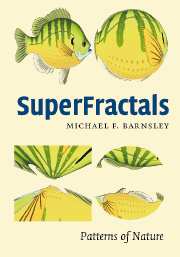1 - Codes, metrics and topologies
Published online by Cambridge University Press: 05 February 2014
Summary
Introduction
Any picture may be conceived as a mathematical object, lying on part of the euclidean plane, each point having its own colour. Then it is a strange and wonderful entity. It is mysterious, for you probably cannot see it. And worse, you cannot even describe it in the type of language with which you normally talk about objects you can see; at least, not without making a lot of assumptions. But we want to be able to see, to describe and to make pictures on paper of fractals and other mathematical objects that we feel ought to be capable of representation as pictures. We want to make mathematical models for real-world images, biological entities such as leaves and many other types of data. To be able to do this we need certain parts of the language of mathematics, related to set theory, metric spaces and topology.
Code space There is a remarkable set, called a code space, which consists of an uncountable infinity of points and which can be embedded in the tiniest real interval. A code space can be reorganized in an endless variety of amazing geometrical, topological, ways, to form sets that look like leaves, ferns, cells, flowers and so on. For this reason we think of a code space as being somehow protoplasmic, plastic, impressionable and capable of diverse re-expressions, like the meristem of a plant; see Figure 1.1. This idea is a theme of this chapter and of the whole book.
- Type
- Chapter
- Information
- SuperFractals , pp. 8 - 88Publisher: Cambridge University PressPrint publication year: 2006



